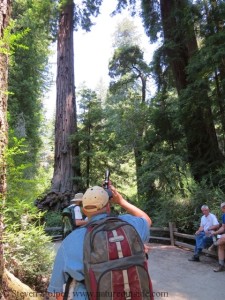 In northern California, we have some of the tallest and biggest trees in the world. Scientists measure the height, width, and total volume of these trees to better understand them. Apparently, spirited arguments break out between tree scientists over whether a particular tree stands 294 feet and 3 inches tall or 294 feet and 1 inch. The measured height determines where it stands on the list of world’s tallest trees. Science and passion are not mutually exclusive! 🙂
In northern California, we have some of the tallest and biggest trees in the world. Scientists measure the height, width, and total volume of these trees to better understand them. Apparently, spirited arguments break out between tree scientists over whether a particular tree stands 294 feet and 3 inches tall or 294 feet and 1 inch. The measured height determines where it stands on the list of world’s tallest trees. Science and passion are not mutually exclusive! 🙂
I attended a very interesting tutorial last fall on how to measure trees. It was given by the California Department of Parks and Recreation. I was fascinated to learn that the height of a tree is measured as its highest point above the surface of the Earth. A 300-foot tree that leaned severely might only be measured as 12-feet high. Bummer for the tree! But it means that some of the world’s tallest trees may be even taller than measured, if they lean.
Measuring a tree
Our primary tool was an upscale laser rangefinder with a sighting scope mounted on its top. The unit weighs 15 lbs!!! But it is very rugged. What’s more, it has an inclinometer so it can do the trigonometry for the scientist. Instead of giving a linear distance and angle (leaving the scientist to do the math), it returns the height of the tree.
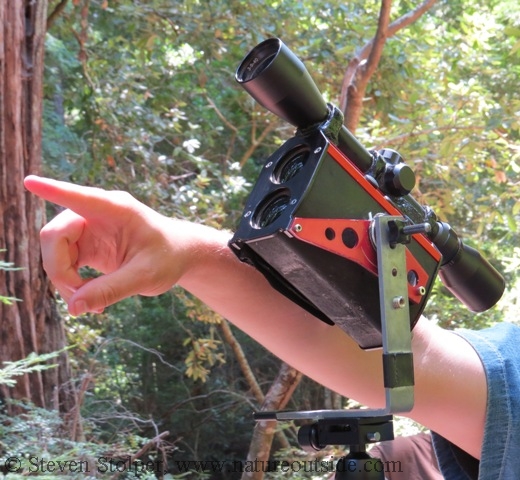
Our optics
But it is not really a measurement of the tree’s height above the ground. To do this, we must measure how far above or below our current position the base of the tree is. To do this, we use a prism that acts like a corner reflector. At any angle, it sends the laser beam back in the direction it came. So we placed the reflector at the base of the tree and shot it with the range finder. When we knew the relative height of the base of the tree, we added or subtracted it from the height we measured to the top. There are some complications involved if we cannot place the reflector right at the base of the tree. Nothing a tape measure can’t solve…
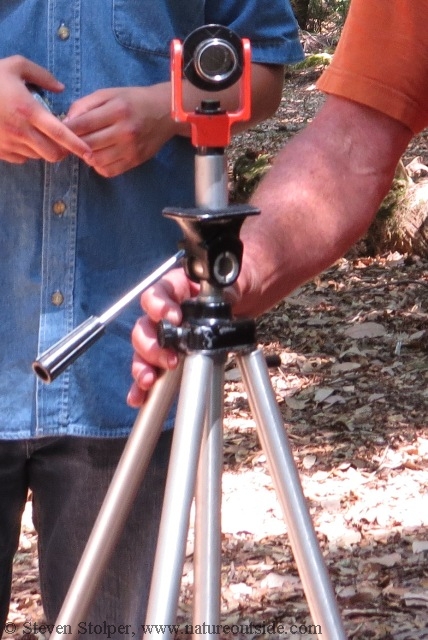
Prism / reflector
Here we are in action measuring a tree that is over 294 feet tall (middle of the picture in the distance).
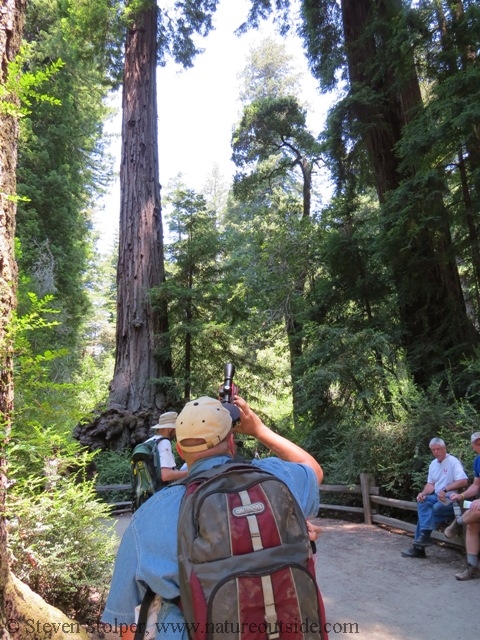
Our target is the middle tree in the distance
In this case, we could not place the reflector at the base of the tree with a direct line of sight. So we shot the reflector several times in a “chain” that ended at the base of the tree. Doing some addition and subtraction of the reflector heights from our starting point gave us a final adjustment for the height of the tree.
Measuring the volume is important, too. To do this, we used a device called a “relascope”. But I wonder if this is a historical name. The device we used (shown below) looked like a monocular range finder. What it did was allow us to measure the angular displacement of each side of the tree. Using trigonometry we can measure how wide the tree is at that spot. Shooting several spots allows us to put together a “frustrum”. This is a shape whose volume can be computed using calculus. Trigonometry was bad enough, but I draw the line at bushcraft and calculus!!! 🙄
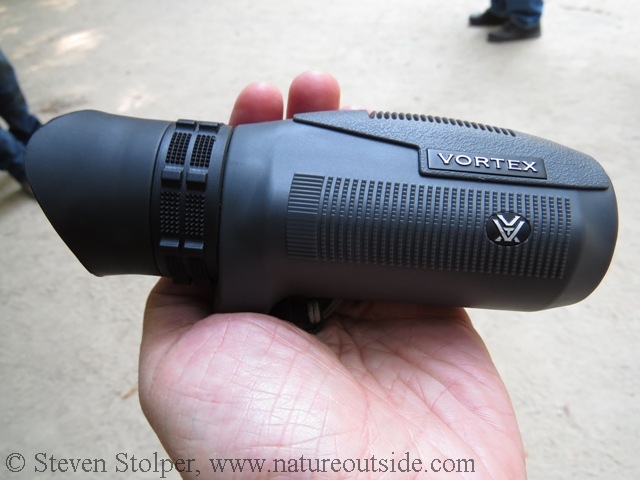
Relascope / range finder
I have simplified this explanation a bit. But I hope you find it interesting. I certainly had a fun day learning about these techniques!


I bet there’s an app for that! LOL great article
LOL! Daniel, that’s a great idea. Maybe we should write one!